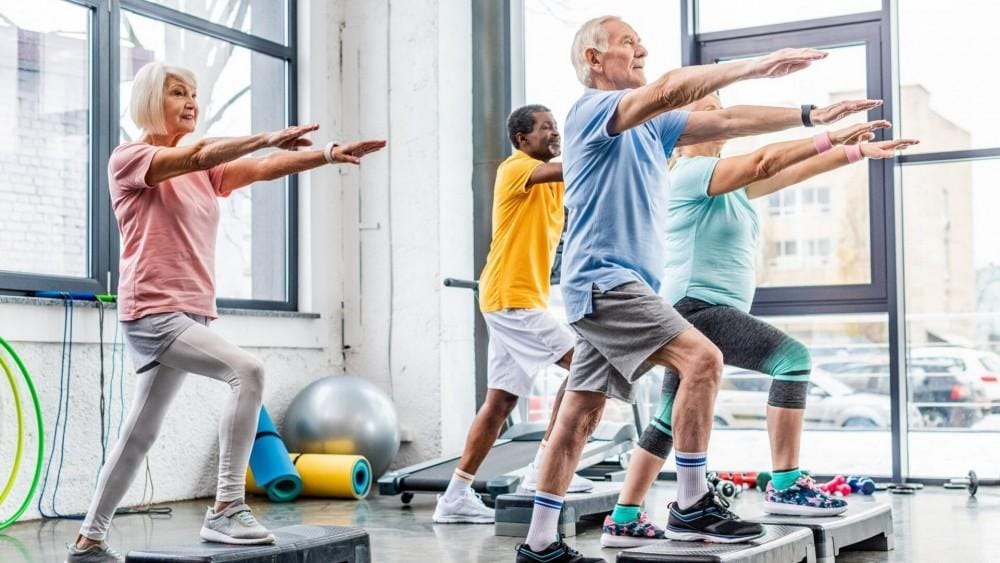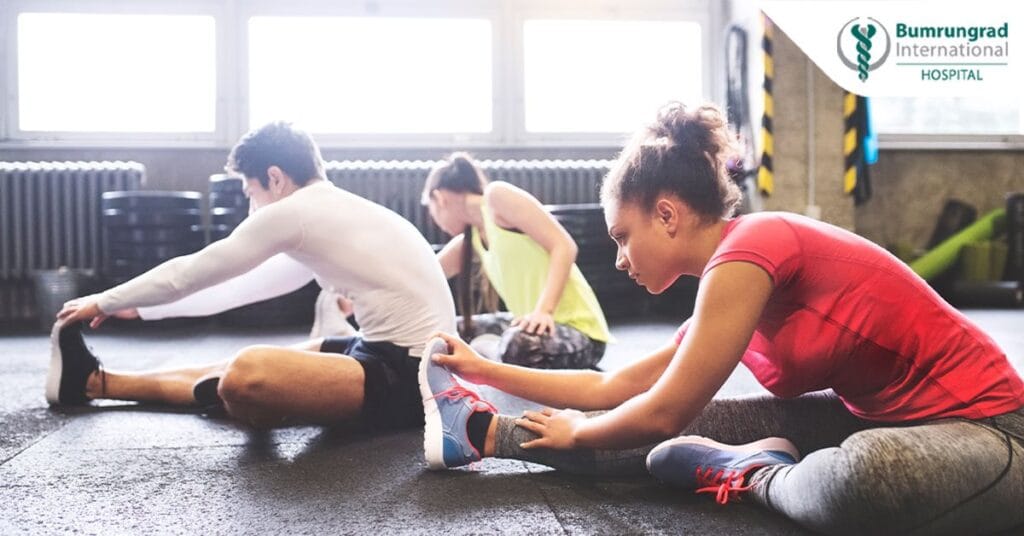Engaging in physical activity is vital for maintaining good health, but it comes with inherent risks that can hinder performance and lead to injuries. Understanding these risks, along with the importance of proper warm-up and cool-down techniques, appropriate gear selection, and listening to your body’s signals, can significantly enhance your fitness journey. This article provides essential insights and actionable strategies to help you optimize your workouts while minimizing the chance of injury, ensuring a safe and sustainable approach to fitness.
In this article you will find:
Understanding Exercise Risks for Optimal Performance
Engaging in physical activity is essential for maintaining good health, but it’s crucial to recognize that every workout carries inherent risks. Understanding these risks is the first step towards optimizing your performance while minimizing the chance of injury. This section delves into the common risks associated with various types of exercises and offers insights on how to navigate them effectively.
Common Exercise Risks
When embarking on a new fitness journey, it’s important to be aware of several common risks that can impede your progress:
- Overuse Injuries: Repeating the same movements without adequate rest can lead to injuries such as tendonitis or stress fractures. This is particularly common in runners and athletes who participate in high-impact sports.
- Improper Form: Using incorrect technique can place undue stress on muscles and joints, increasing the likelihood of strains or sprains. Proper form is essential for both performance and safety.
- Lack of Warm-Up: Skipping warm-ups can result in muscle stiffness and reduced flexibility, making your body more susceptible to injuries during workouts.
- Inadequate Recovery: Failing to allow time for recovery can lead to fatigue and decreased performance, ultimately increasing the risk of injury.
Identifying Personal Risk Factors
Each individual faces unique risk factors based on their fitness level, health history, and lifestyle. Here are a few considerations to help you identify your personal risks:
- Pre-existing Conditions: If you have chronic conditions such as arthritis, diabetes, or cardiovascular issues, consult a healthcare professional before starting a new exercise regimen.
- Fitness Level: Beginners may be more prone to injuries due to lack of experience, while advanced athletes might push their limits without adequate caution.
- Age: As we age, our bodies may not recover as quickly, making it crucial to adapt workouts to suit changing physical capabilities.
Strategies to Mitigate Risks
To enjoy a safe and effective workout experience, consider implementing the following strategies:
- Educate Yourself: Take the time to learn proper techniques and safety measures for each exercise. Online resources, fitness classes, and personal trainers can provide valuable guidance.
- Set Realistic Goals: Establish achievable fitness goals that align with your current abilities and gradually increase the intensity of your workouts.
- Incorporate Variety: Mixing different types of exercises can prevent overuse injuries and keep your routine engaging. Consider combining strength training, cardio, and flexibility work.
- Listen to Your Body: Pay attention to any signs of discomfort or pain. If something doesn’t feel right, it’s essential to stop and reassess your approach.
By understanding and addressing the risks associated with exercise, you can create a more sustainable and enjoyable fitness journey. For further insights on the importance of fitness education, explore resources from the Better Health Channel, which offers valuable information on safe exercise practices.
Essential Warm-Up and Cool-Down Techniques
Incorporating effective warm-up and cool-down techniques into your fitness routine is vital for maximizing performance and minimizing injury risk. These practices prepare your body for exercise and facilitate recovery afterward. This section explores essential techniques to ensure your workouts are both safe and effective.
The Importance of Warming Up
A proper warm-up is crucial as it gradually increases your heart rate and enhances blood flow to your muscles, which can improve your overall performance. Additionally, warming up increases flexibility and prepares your body mentally for the workout ahead.
- Dynamic Stretching: Engage in movements that mimic the activity you’re about to perform. Examples include leg swings, arm circles, and walking lunges. These exercises enhance flexibility and muscle activation.
- Light Cardio: Spend 5 to 10 minutes on low-intensity activities like jogging, cycling, or jumping jacks. This helps elevate your heart rate and warms up your muscles.
- Sport-Specific Movements: If you’re preparing for a specific sport, incorporate movements relevant to that activity. For instance, if you’re about to play basketball, practice shooting and dribbling.
Effective Cool-Down Techniques
Cooling down after a workout is just as important as warming up. It helps your heart rate and breathing return to normal and reduces muscle soreness. Here are some effective cool-down techniques:
- Static Stretching: Focus on stretching the major muscle groups you worked during your session. Hold each stretch for 15-30 seconds to enhance flexibility and relieve tension.
- Deep Breathing: Incorporate deep breathing exercises to promote relaxation and help regulate your heart rate. Inhale deeply through your nose and exhale slowly through your mouth.
- Foam Rolling: Utilize a foam roller to massage sore muscles and release tightness. This technique aids in recovery and can improve overall muscle function.
Creating a Personalized Warm-Up and Cool-Down Routine
Developing a personalized warm-up and cool-down routine can greatly enhance your workout effectiveness. Consider these tips when creating your plan:
- Assess Your Activity: Tailor your warm-up and cool-down based on the type of exercise you plan to do. Different activities may require varying approaches.
- Listen to Your Body: Pay attention to how your body feels before and after workouts. Adjust your routine based on your energy levels and any areas of discomfort.
- Consistency is Key: Make warm-ups and cool-downs a regular part of your exercise routine. Consistency will help your body adapt and improve overall performance.
For more detailed guidance on effective warm-up and cool-down techniques, refer to the resources available at the Better Health Channel, which offers comprehensive information on safe exercise practices.
Choosing the Right Gear for Injury Prevention
Selecting the appropriate gear for your workouts is a critical factor in preventing injuries and enhancing performance. The right equipment not only supports your body during physical activity but also minimizes the risk of strain and injury. This section will explore essential gear considerations that can help you stay safe and effective in your fitness journey.
Footwear: The Foundation of Injury Prevention
Your choice of footwear is paramount, as it directly impacts your overall stability and support during workouts. Here are key factors to consider when selecting the right shoes:
- Activity-Specific Design: Choose shoes designed for the specific activity you’re engaging in. Running shoes, cross-trainers, and weightlifting shoes each have unique features tailored to their respective sports.
- Cushioning and Support: Look for shoes with adequate cushioning to absorb impact, especially if you engage in high-impact activities like running. Arch support is also crucial for maintaining proper foot alignment.
- Fit and Comfort: Ensure the shoes fit well, allowing for some wiggle room in the toes without being too loose. A snug fit helps prevent blisters and other foot injuries.
Apparel: Comfort and Functionality
Wearing the right workout apparel can also play a significant role in injury prevention. Consider the following when choosing your fitness clothing:
- Moisture-Wicking Fabrics: Opt for materials that wick sweat away from your body, keeping you dry and comfortable. This helps regulate your body temperature and reduces the risk of chafing.
- Proper Fit: Ensure that your clothing allows for a full range of motion without being overly restrictive. Loose-fitting clothing can lead to tripping or snagging during workouts.
- Layering: In colder weather, layering can help regulate body temperature. Start with a moisture-wicking base layer and add insulating layers as needed.
Protective Gear: Enhancing Safety for Specific Activities
Depending on the type of exercise you engage in, additional protective gear may be necessary. Here are some examples:
- Knee and Elbow Pads: If you participate in sports like skateboarding or rollerblading, wearing pads can protect against falls and impacts.
- Weightlifting Belts: For those lifting heavy weights, a belt can provide additional support to the lower back, reducing the risk of injury.
- Supportive Braces: Consider using ankle or wrist braces if you have a history of injuries in those areas, as they can provide extra stability during workouts.
 Investing in Quality Gear
Investing in Quality Gear
While it might be tempting to opt for cheaper alternatives, investing in quality gear is essential for long-term injury prevention and performance enhancement. High-quality equipment often features better materials and construction, leading to greater durability and effectiveness. Here are some tips:
- Research Brands: Look for reputable brands known for their quality and performance. Read reviews and seek recommendations from fitness professionals or fellow enthusiasts.
- Try Before You Buy: Whenever possible, try on shoes and apparel before purchasing. This ensures you find the right fit and comfort level for your body.
- Don’t Skimp on Safety Gear: Always prioritize safety gear when necessary. The right protective equipment can make a significant difference in preventing injuries.
For further insights into the importance of quality fitness gear, visit the National Institute on Aging, which provides valuable information on exercise and health.
Listening to Your Body for Sustainable Fitness
Listening to your body is an essential aspect of achieving sustainable fitness. It involves recognizing and responding to the signals your body sends during workouts, recovery, and daily activities. This section will explore how to tune in to your body’s needs, the importance of self-awareness, and strategies for fostering a long-lasting fitness journey.
The Importance of Self-Awareness in Fitness
Self-awareness is the foundation of effective training. By understanding how your body responds to different exercises, you can make informed decisions that enhance performance and prevent injuries. Key components of self-awareness include:
- Recognizing Pain vs. Discomfort: It’s vital to distinguish between normal muscle soreness and actual pain. Pain is a signal that something may be wrong, while discomfort can indicate that your muscles are adapting and growing stronger.
- Monitoring Fatigue Levels: Be mindful of your energy levels throughout the day. Feeling excessively fatigued may indicate the need for rest or a change in your workout intensity.
- Tracking Progress: Keep a journal or use fitness apps to track your workouts and how your body responds. This can help identify patterns and areas that need adjustment.
Responding to Your Body’s Signals
Understanding your body’s signals is crucial for making appropriate adjustments to your fitness routine. Here are some strategies to effectively respond:
- Adjusting Intensity: If you notice signs of fatigue or strain, consider reducing the intensity of your workouts. This might mean lowering the weight you lift, decreasing the duration of cardio sessions, or incorporating more rest days.
- Incorporating Active Recovery: On days when you feel sore or fatigued, opt for low-impact activities such as walking, yoga, or swimming to promote blood flow and recovery without placing additional stress on your body.
- Consulting Professionals: If you experience persistent pain or discomfort, consult a healthcare provider or fitness professional for guidance. They can help assess your situation and provide tailored recommendations.

Building a Sustainable Fitness Routine
A sustainable fitness routine is one that you can maintain over the long term without risking injury or burnout. Here are some tips for building such a routine:
- Set Realistic Goals: Establish achievable short-term and long-term fitness goals that align with your current abilities and lifestyle. Break larger goals into smaller, manageable milestones.
- Prioritize Variety: Incorporate a mix of cardiovascular, strength, flexibility, and balance training into your routine. This not only prevents boredom but also reduces the risk of overuse injuries.
- Emphasize Recovery: Schedule regular rest days and prioritize sleep, nutrition, and hydration to support your body’s recovery processes.
Mindfulness and Fitness
Practicing mindfulness can enhance your ability to listen to your body effectively. Mindfulness techniques, such as meditation or focused breathing, can improve your awareness of physical sensations and emotional responses during exercise. Consider integrating these practices into your routine to foster a deeper connection with your body.
For further insights on the importance of body awareness in fitness, explore the resources available at the Better Health Channel, which offers valuable information on safe exercise practices and health benefits.Engaging in physical activity is essential for health, but it carries inherent risks that can impede performance and lead to injuries. Key risks include overuse injuries, improper form, lack of warm-ups, and inadequate recovery. To mitigate these risks, individuals should educate themselves about proper techniques, set realistic goals, incorporate variety in workouts, and listen to their bodies for signs of discomfort or fatigue.
In addition to understanding risks, effective warm-up and cool-down techniques are vital for maximizing performance and recovery. Utilizing dynamic stretching and light cardio during warm-ups prepares the body for exercise, while static stretching and foam rolling during cool-downs aid recovery. Choosing the right gear, including activity-specific footwear and moisture-wicking apparel, further enhances safety. By fostering self-awareness and adopting a sustainable fitness routine, individuals can maintain their health and prevent injuries over the long term.


 Investing in Quality Gear
Investing in Quality Gear

